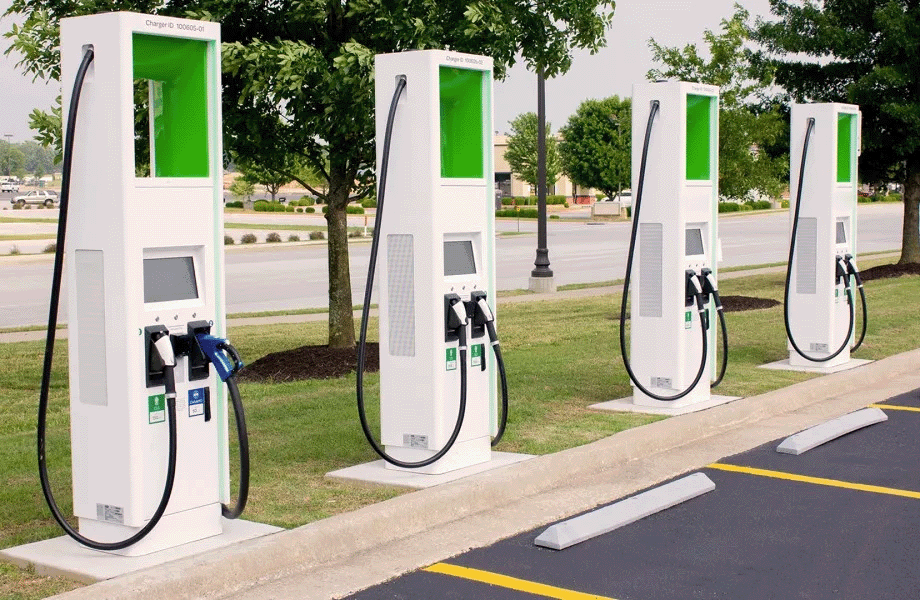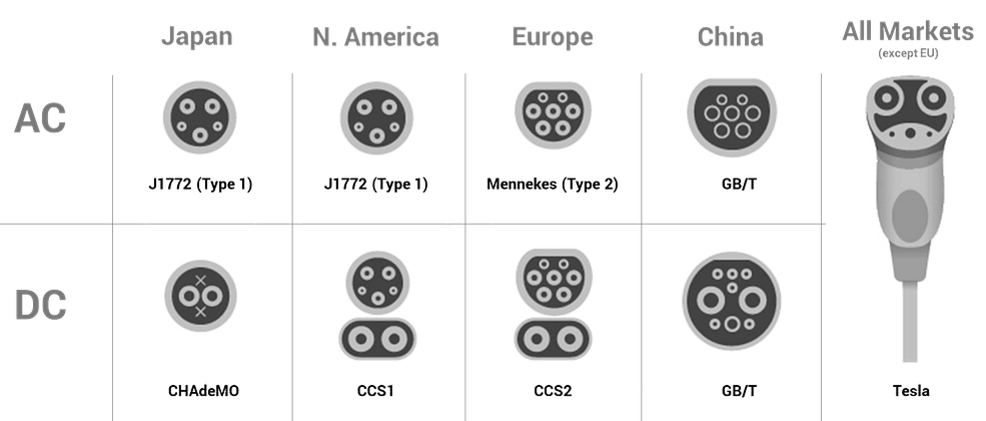Electric vehicles (EVs) have revolutionized the automotive industry, offering a cleaner, more sustainable alternative to traditional gasoline-powered cars. As EVs become more mainstream, the need for efficient and fast charging solutions has grown. One such solution is DC fast charging, which promises to reduce charging time significantly compared to traditional methods. While the convenience of rapid charging is undeniable, concerns have arisen regarding its potential impact on the longevity and efficiency of EV batteries. In this article, we will delve into the mechanics of DC fast charging, compare it with other charging methods, and explore whether frequent use of DC fast charging is detrimental to your EV's battery health.

Fast charging refers to a method of recharging an electric vehicle (EV) in a much shorter time frame than traditional charging methods. Unlike standard Level 1 or Level 2 charging, which can take several hours, fast charging is designed to deliver a substantial amount of energy to an EV’s battery in a matter of minutes. The primary goal of fast charging is to reduce the waiting time for users, making EVs more convenient for long-distance travel and daily use.
Fast charging typically falls under the Level 3 category, which is also known as DC fast charging. This system is capable of providing a high voltage and current directly to the vehicle’s battery, enabling a rapid charging process. While DC fast charging offers convenience, it is essential to understand how it works and its impact on the EV’s battery over time.
There are different levels of charging for electric vehicles, each with varying power outputs and charging times.
Level 1 charging uses a standard 120-volt household outlet and is the slowest form of charging. This method typically adds about 2-5 miles of range per hour of charging, making it ideal for overnight charging at home. However, due to the low power output, it is not suitable for quickly recharging an EV during the day.
Level 2 charging requires a dedicated 240-volt outlet, similar to the power used by large appliances like dryers or electric ovens. This method is faster than Level 1, providing about 10-30 miles of range per hour of charging, depending on the vehicle and charger’s power rating. It is widely used in residential settings and public charging stations.
DC fast charging (Level 3) offers the quickest recharge times by delivering direct current (DC) power directly to the vehicle’s battery. Depending on the power rating, DC fast charging stations can provide up to 80% of the vehicle’s battery charge in as little as 30 minutes. This level of charging is commonly found along highways for long-distance travel, where drivers need a quick boost to continue their journey.
In a typical electric vehicle charging scenario, the electricity from the power grid is supplied as Alternating Current (AC). For Level 1 and Level 2 charging, this AC power is converted to Direct Current (DC) by the vehicle’s onboard charger, which then stores the energy in the battery. This conversion process is slower and limits the speed at which the vehicle can charge.
However, with DC fast charging, the charging station itself converts the AC power from the grid to DC and directly delivers it to the vehicle’s battery. This eliminates the need for an onboard charger to convert the power, enabling a much faster charging process. As a result, DC fast charging is significantly more efficient, reducing the time needed to charge an EV battery compared to Level 1 or Level 2 charging.

The primary difference between AC and DC charging lies in how the electricity is delivered to the EV battery:
In AC charging, the electricity is alternating current, which the EV’s onboard charger must convert into direct current (DC) before it can be stored in the battery. This conversion process adds an extra step, making AC charging slower and less efficient.
In DC fast charging, the electricity supplied to the EV is already converted to direct current, which can be directly stored in the vehicle’s battery. As a result, DC charging is faster and more efficient, making it ideal for rapid recharging when time is of the essence.
While DC charging offers substantial speed advantages, it is important to understand the potential downsides, particularly concerning battery health.
Several factors can influence the speed and efficiency of DC fast charging, including:
The temperature of the EV’s battery can significantly affect the charging rate. Batteries operate most efficiently within a specific temperature range. Extremely hot or cold conditions may slow down the charging process or cause the system to limit the charging speed to protect the battery.
The power rating of the charging station plays a critical role in determining how quickly the vehicle charges. Higher power ratings result in faster charging times. DC fast chargers can range from 50 kW to over 350 kW, with higher-power stations offering faster recharging speeds.
The battery's current charge level also affects the charging speed. When an EV battery is nearly empty, it can accept charge at a faster rate. However, as the battery approaches full charge, the rate of charging naturally slows down to prevent overcharging and damage to the battery.
The number of vehicles connected to a charging station can impact charging speed. In heavily used stations, the available power may be shared among several vehicles, reducing the charging rate for each individual EV.
DC fast charging stations are generally more expensive to install and operate than Level 2 charging stations, which is why users often face higher fees for using them. These additional costs may discourage regular use of fast charging.
While DC fast charging offers undeniable convenience, frequent use can potentially impact the health of your EV’s battery. The primary concern stems from the fact that high power levels from DC fast chargers generate additional heat, which can put stress on the battery cells. Here’s a closer look at how DC fast charging can affect battery performance:
One of the primary effects of fast charging is the heat generated within the battery. When a large amount of energy is quickly transferred to the battery, it can cause the temperature of the battery to rise. High temperatures, over time, can lead to degradation of the battery’s chemical components, which ultimately reduces its capacity and lifespan.
Unlike Level 1 and Level 2 charging, which operate at lower currents, DC fast charging puts additional strain on the battery. This can lead to a phenomenon known as battery cycling, where the battery undergoes repeated charging and discharging cycles, causing wear and tear. Over time, this can reduce the battery’s overall lifespan and efficiency.
As batteries age, they lose their ability to efficiently store and discharge energy. Frequent use of DC fast charging can accelerate this process, leading to a reduction in overall battery performance. While the impact may not be immediately noticeable, over years of regular fast charging, the battery may lose some of its capacity, resulting in shorter driving ranges.
Experts recommend using DC fast charging sparingly to prolong battery life. While it is perfectly fine to use fast charging for long-distance travel or when in a time crunch, frequent use of DC fast charging for routine top-ups is not advisable. Instead, regular Level 2 charging is a more gentle and battery-friendly method for everyday use.
Modern EVs are equipped with sophisticated Battery Management Systems (BMS) that monitor the temperature, charge level, and overall health of the battery. These systems help optimize charging cycles and ensure that the battery remains within safe operating conditions. However, even with these protections, excessive use of DC fast charging may still result in long-term battery wear.
While it’s clear that overusing DC fast charging can have long-term effects on battery health, there are times when it is necessary or highly convenient:
DC fast charging is ideal for long trips when you need to recharge quickly and get back on the road. With fast charging stations located along highways and major routes, they offer a reliable solution for overcoming range anxiety.
For drivers who do not have access to Level 2 charging at home or work, DC fast charging stations may be the only viable option for recharging on the go.
If you are in a hurry and need to recharge quickly, DC fast charging is the best solution to get back on the road as soon as possible.
DC fast charging offers significant benefits in terms of convenience and time-saving, but frequent use can have negative long-term effects on your EV’s battery health. While it is not inherently bad for the battery, using DC fast charging regularly can accelerate battery degradation due to heat generation and increased wear. To ensure optimal battery life, it is best to reserve fast charging for situations where it is truly necessary, such as long-distance trips or when other charging options are unavailable. For everyday use, regular Level 2 charging remains the most battery-friendly option.